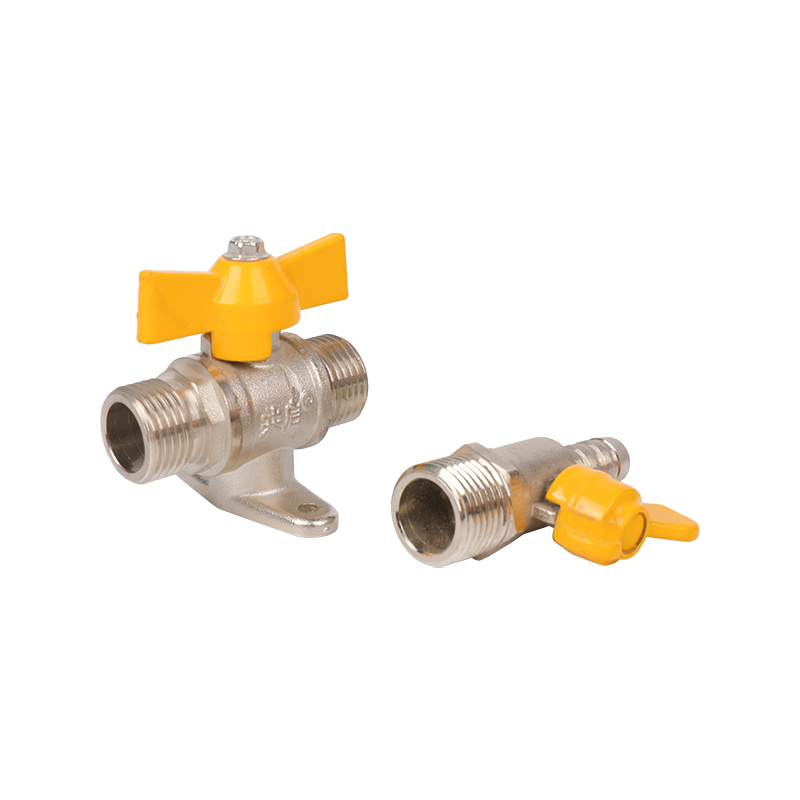What are the uses of hydraulic needle valve?
Author:admin Date:2023-02-14
Hydraulic needle valve are used in an incredibly wide range of applications anywhere control or metering of steam, air, gas, oil, water or other non-viscous liquids is required.Needle valves are made up of a handle (A), stem (B), threads (C), packing nut (D), tapered end (E), orifice (F), port connection (G) and valve housing (H). They can be operated manually or automatically depending on the system.
Flow rate control is important in many industrial systems, particularly within main piping lines and monitoring and instrumentation systems. This allows for more accurate control over the substances that are being monitored.Needle valves are an excellent choice for throttling flow rate control, which means they can be used to vary the amount of fluid flowing through a pipe. This is achieved by varying the cross-sectional area of the path of the fluid, as Bernoulli’s principle suggests.In addition, needle valves can be used to regulate pressure and fluid flow. They also offer a wide range of port and orifice sizes to ensure that they meet your specific requirements.Needle valves can be manually operated or automatically controlled by a motorized actuator. Using this option can increase efficiency and save time. They can also be put on a timer to control the flow rate remotely. Choosing the right type of needle valve will ensure smooth and reliable operation.
Needle valves, like globe valves, are used for regulating flow rates. The difference between them is that globe valves have a large hole in their body to allow flow to travel through, while needle valves have a small opening at the end of their stems that prevents turbulent flow.Needle valves are ideal for regulating fluid flow in low-pressure hydraulic systems, chemical processing and other gas and liquid service applications. They're also commonly used to protect sensitive gauges from damage caused by sudden pressure surges of liquids and gases.Both manually operated and automated needle valves can provide accurate flow control. This is because the hand-wheel is finely threaded, meaning that it takes several spins to alter the plunger's position.
A needle valve is a type of plunger valve that allows piping technicians to regulate the flow of fluids with extraordinary precision. It consists of a long-threaded plunger and a tapered end that raises and lowers with the turn of a handle to open or close an orifice.Needle valves are used to control the flow of fluids in hydraulic systems, as well as for other industrial applications. They also serve as protectors for delicate gauges that may be damaged by sudden pressure surges caused by gas or liquid flow within a system.Needle valves are durable and are typically made of robust materials. They are also available in a wide range of port and orifice sizes. They can be connected with male and female connections using inch or metric threads. These features ensure efficient flow and system operation with fewer chances of wear or leakage.
When you need precision in your hydraulic system, a needle valve can be the answer. It offers a wide range of flow control options, making it ideal for applications that require accuracy in metering and monitoring.These valves also help reduce the chance of damaging sensitive instruments. They are often used to protect delicate gauges from sudden pressure surges in liquid and gas systems.Needle valves can be hand-operated or automatically controlled with a hydraulic motor. They can also be fitted with air actuators that open and close the valve automatically.They are usually made of metal alloys such as stainless steel, brass or bronze. They are available in a variety of port and orifice sizes.Needle valves are designed to allow precise adjustment of the plunger’s position by turning a handwheel several times. This means that they can be more accurate than ball valves. It also makes them more suitable for throttling applications.
Valve

Valve



 English
English Deutsch
Deutsch











